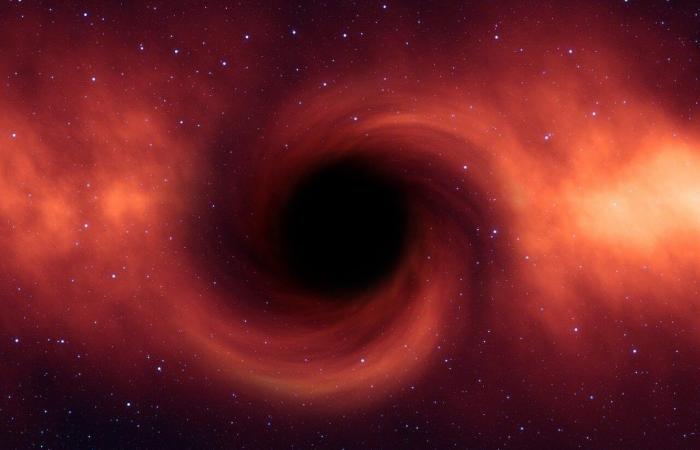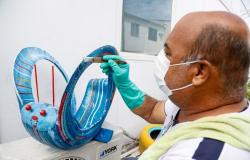This “periodic hiccup” is a new behavior that has not been observed in black holes until now, according to the researchers, who believe that the most likely explanation is due to a second, smaller black hole that rotates around the central one, impacting repeatedly your gas disc.
This situation would cause material to be ejected from the larger black hole’s gas disk every 8.5 days.
The findings of this “dancing couple” were published in the journal Science Advances and question the conventional image of accretion disks – a rotating structure of matter around the black hole – which were supposed to be relatively uniform disks of gas, reported this Wednesday the Efe agency.
According to the results, its content may be more varied, and may include other black holes and even entire stars, said in a statement the Massachusetts Institute of Technology (MIT), which participated in the research together with centers in the Czech Republic. , Italy and the United Kingdom.
The discoveries emerged from automated detection by ASAS-SN, a network of 20 robotic telescopes located in various locations in the northern and southern hemispheres, which monitors the sky once a day for signs of supernovae and other transient phenomena.
In December 2020, they detected a burst of light in a galaxy located around 800 million light-years away, in a part of the sky that until then had been relatively calm and dark.
The researchers then decided to focus on the explosion with NASA’s Nicer, a telescope aboard the International Space Station that continually monitors the sky for bursts of X-rays that could indicate activity from neutron stars, black holes and other gravitational phenomena. extremes.
The phenomenon lasted about four months before it “shut down” and during that time Nicer made daily measurements of the galaxy’s X-ray emissions.
When examining the data, the team noticed a curious pattern: subtle dips, in a very narrow band of X-rays, that seemed to reappear every 8.5 days.
As the MIT team searched for an explanation, one of their scientists, Dheeraj R. Pasham, came across a paper by theoretical physicists in the Czech Republic, who deduced that, in theory, it was possible for a central supermassive black hole in a galaxy to host a second, much smaller hole.
This smaller one could orbit at an angle to its larger companion’s accretion disk and, in doing so, would periodically impact the primary black hole’s disk. In the process, a column of gas would be released.
Upon reading the article, Pasham contacted the Czech team to check together: the observed explosion was probably the signal of a second, smaller black hole, orbiting a central supermassive, periodically impacting its disk.
Scientists also suspect that a third object — likely a nearby star — came too close to the system and was torn apart by the supermassive black hole’s immense gravity, an event called “tidal disruption.”
For four months, the black hole ‘feasted’ on stellar debris while the second black hole continued to orbit. As it passed through the disk, it ejected a mass much larger than normal, which was launched in a straight line towards the Nicer telescope.
After countless simulations, the most likely explanation is a new type of “David-Goliath” system: a tiny, intermediate-mass black hole orbiting a supermassive one.
Tags: Silent black hole explodes scientists discover dancing couple
--





